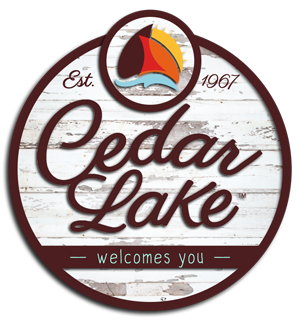Stormwater Management
What is Stormwater?
Stormwater is rainwater that washes through our property and streets, taking with it any debris that may be in its path. This mixture of rain, debris, oil, and waste is known as “runoff.”
What is Stormwater Management?
Stormwater Management is a mechanism for controlling stormwater runoff. These practices are incorporated into the design of a development to mitigate any impacts the development may have on the aquatic environment. Stormwater Management practices address two major issues, the quantity or volume of stormwater and the stormwater quality.
Stormwater Quantity
Pervious (or vegetated) surfaces, such as fields, meadows, and woodlands absorb and infiltrate rainfall and generate little runoff. As land develops, these areas are typically covered with impervious surfaces, such as pavement and rooftops. These impervious surfaces generate more runoff every time it rains. The quantity of runoff from these areas can overwhelm natural channels and streams. Stormwater Management practices are designed to offset these increases in runoff.
Stormwater Quality
The pervious and impervious surfaces in the urbanized landscape collect pollutants such as automobile oil, grease, brake pad dust, sediment from construction sites, bacteria from animal waste, excess lawn care fertilizers, pesticides, and atmospheric deposition of phosphorus, nitrogen, and other airborne pollutants. Rainfall washes these surfaces so that the initial flush of runoff can carry high concentrations of these pollutants to nearby drinking water supplies, waterways, beaches, and properties. Pollution washed from the land surface by rainfall is called nonpoint source pollution. Stormwater Management practices also provide water quality treatment to help prevent additional pollution from entering streams and rivers. Stafford County is located in the Chesapeake Bay Watershed, where protecting water quality is very important.
Stormwater Regulations
The National Pollutant Discharge Elimination System (NPDES) Stormwater Program regulates stormwater discharges from three potential sources: Municipal Separate Storm Sewer Systems (MS4s), construction activities, and industrial activities. Most stormwater discharges are considered point sources, and operators of these sources may be required to receive an NPDES permit before they can discharge. This permitting mechanism is designed to prevent stormwater runoff from washing harmful pollutants into local surface waters such as streams, rivers, lakes, or coastal waters.
The NPDES Stormwater Program is a comprehensive two-phased national program comprised as follows:
Phase I, issued in 1990, requires medium and large cities or certain counties with populations of 100,000 or more to obtain NPDES permit coverage for their stormwater discharges.
Phase II, issued in 1999, requires regulated small MS4s in urbanized areas as well as small MS4s outside the urbanized areas that are designated by the permitting authority to obtain NPDES permit coverage for their stormwater discharges.
In the State of Indiana, the Indiana Department of Environmental Management (IDEM) is responsible for the development and oversight of the NPDES Stormwater Program.
IDEM initiated the adoption of the Phase II Rules, which were codified as Rule 13 became effective on August 6, 2003, and requires designated MS4 entities to apply for permit coverage by submitting a Notice of Intent (NOI) and developing Storm Water Quality Management Plans (SWQMPs) through a phased submittal process. The IDEM’s phased submittal requirements include implementing a Stormwater Quality Management Plan approved on March 1, 2005.
The Town of Cedar Lake meets the criteria of a small MS4 entity. The Town of Cedar Lake SWQMP submittals are presented below:
Part B – Baseline Characterization Report
Part C – Program Implementation Plan
The Town has also established an Ordinance establishing the methods for managing the quantity and quality of stormwater entering into the Town of Cedar Lake stormwater drainage system to comply with State and Federal requirements, as presented below:
Town of Cedar Lake Stormwater Ordinance
Stormwater System Map
The following is a copy of the Stormwater System Map for the Town of Cedar Lake:
